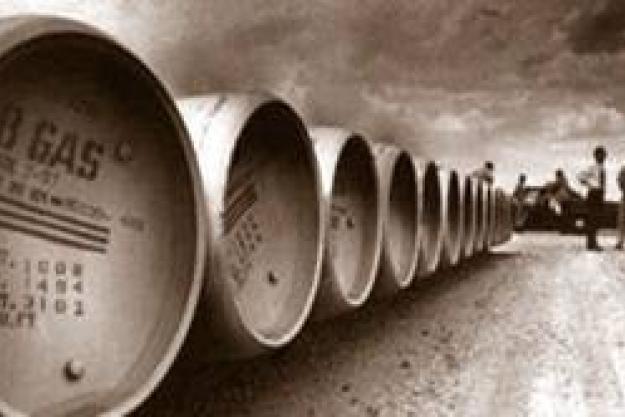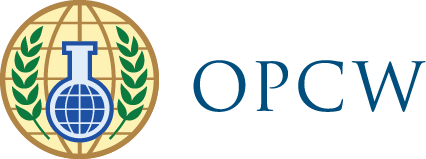
Following are the paragraphs related to chemical demilitarisation contained in the opening statement by the OPCW Director-General to the Executive Council at its 55th session.
States Parties that have declared chemical weapons are moving steadily towards the goal of complete destruction of their stockpiles. In this respect, as at 31 January 2009, OPCW inspectors had verified the destruction of 29,741 metric tonnes of Category 1 chemical weapons, or 42.76%, of the total stockpiles declared by six possessor States. The amount of Category 2 chemical weapons destroyed remained unchanged at 915 metric tonnes (or 51.8% of the total declared).
India, the Libyan Arab Jamahiriya, the Russian Federation, and the United States of America submitted their sixth and seventh reports on the progress made towards completing the destruction of their Category 1 chemical weapons in a timely manner. As on previous occasions, the Secretariat was able to reconcile the data collected during systematic verification of destruction with the information provided in these reports. In addition, China and Japan each submitted two reports on the progress made towards the destruction of chemical weapons abandoned by Japan on the territory of China.
The United States has to date destroyed about 16,126 metric tonnes, or 58%, of its stockpile. Two destruction facilities in that State Party––Tooele and Pine Bluff––are currently destroying mustard in one-ton containers. In addition, an OPCW inspection team has been tasked with the monitoring of operations related to the completion of the agent campaign at Anniston and the post treatment of the hydrolysate resulting from the destruction of three leaking containers at Blue Grass. Umatilla, and soon thereafter Anniston, are preparing for the mustard campaign, scheduled to commence in April and June respectively; the Explosive Destruction System at Pine Bluff continues to be in a period of inactivity.
I wish to mention here, since I am referring to the United States, a letter addressed to me by President Obama in response to my own letter of congratulation to him last November. In that letter, President Obama indicates his readiness to “work together in a spirit of peace and friendship to build a more secure world …”. This, indeed, gives us grounds for satisfaction for all of the OPCW and we continue to look forward to promoting and enhancing cooperation with the United States of America towards the success of the Convention.
On its part, the Russian Federation has accomplished destruction of about 11,960 metric tonnes, or 29.84%, of its Category 1 chemical weapons. The destruction of chemical weapons at Leonidovka commenced on 2 September 2008, with the insertion of reagent in air bombs filled with Vx. The draining of the resulting reaction mass is currently ongoing. For the time being, no chemical weapons are being reported as destroyed at this facility, as the thermal treatment and mutilation units are not processing. Two other facilities—Kambarka and Maradykovsky—are also operating currently in the Russian Federation. Kambarka is close to completing the destruction of the residual lewisite in bulk storage tanks. Maradykovsky, on the other hand, continues the thermal treatment of the reaction mass and of the previously mutilated (by nose-thread welding) empty munitions bodies. A final engineering review of the Shchuchye facility took place in November 2008, when this facility was in the final stage of preparations, equipment installation and testing for the commencement of chemical weapons destruction. Recently, the Russian Federation notified the Secretariat that Shchuchye would commence equipment testing with live agent beginning on 5 March 2009. Consequently, an inspection team will be deployed at the site to ensure systematic verification of destruction as per the current notification.
I also wish to mention that, having due regard to States Parties’ obligations under the Chemical Weapons Convention and in response to a request from the Russian Federation, the Secretariat has agreed with that State Party on an adjustment of the reported figure for the aggregate quantities of chemical weapons initially declared. This adjustment, relating to thickeners forming part of viscous chemical agents, does not affect or limit the obligation of this State Party to destroy its entire chemical weapons stockpile. This State Party will be required to agree on the relevant practicalities with the Secretariat. The Secretariat will provide further information in the 2008 and 2009 Verification Implementation Reports and in other relevant documents.
I also look forward to my forthcoming visit to the Russian Federation, in the second week of March, where I will have the privilege to call on H.E. Mr Sergey V. Lavrov, Minister of Foreign Affairs, and on other senior officials and Members of Parliament.
India has progressed to destroy a quantity of Category 1 chemical weapons corresponding to 98.72% of the total amount of such declared weapons. Following the completion of destruction of the unrecoverable heel in bulk storage tanks, the destruction facility in this State Party commenced the destruction of the remaining mustard-filled chemical munitions in January. To increase capacity, a second incineration plant was built at the facility, which is planned to complete the destruction of its entire chemical weapons stockpile by 29 April 2009. We very much look forward to India completing the destruction of its declared stockpile of chemical weapons.
The Secretariat conducted a final engineering review of the Ruwagha Chemicals Reloading System in the Libyan Arab Jamahiriya between 7 and 14 January 2009. The team of the Secretariat noted that the site was not prepared to start reloading operations as originally scheduled for 15 January 2009, due to the absence or incomplete installation of required process and monitoring equipment. During the visit, as well as in their seventh report on the progress made towards completing the destruction of their Category 1 chemical weapons, the Libyan authorities emphasised that the final assembly and commissioning of the facility will not take place earlier than 15 March 2009, when a further review would be required prior to the actual start of reloading operations.
China and Japan, on their part, have just completed the first trial excavation at Haerbaling. The results of this and other, similar trials are expected to provide more information on the condition of buried abandoned chemical weapons there, which will be important for eventual recovery efforts. Both China and Japan have begun discussions with the Technical Secretariat regarding a draft facility agreement and detailed plan for verification. The second series of meetings on this subject is scheduled for the end of this month here in The Hague. While, to date, there has been no destruction of chemical weapons abandoned by Japan on the territory of China, and construction of destruction facilities has not begun yet, we deeply appreciate these States Parties’ efforts and look forward to destruction beginning at the earliest opportunity. The Technical Secretariat fully supports them in accordance with the Chemical Weapons Convention.
A final point about destruction activities relates to the Dzerzhinsk lewisite chemical weapons production facility (CWPF), in the Russian Federation. Once all conditions for certification of the destruction of this facility had been met, the Secretariat issued in January 2009 a certificate of destruction for that production facility.
